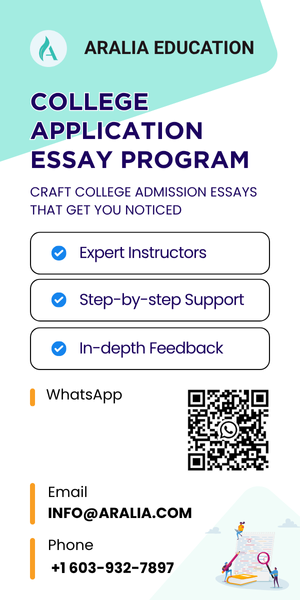In this article, let’s break down what the 529 rules are, the new changes, why they matter, and how students and parents can take full advantage of them.
1. What Is the 529 Plan?
A 529 plan is a tax-advantaged savings account designed to help families save for education-related expenses. These plans are typically operated by individual states or educational institutions and come with powerful benefits when used correctly.
How does the 529 plan work?
You open a 529 account and name a beneficiary, usually your child or another student. The money you contribute is invested and grows tax-free, as long as it’s used for qualified education expenses. These include college costs, K–12 tuition (up to $10,000 per year), and starting in 2025, tutoring and test prep.
Who can open a 529 plan?
Anyone. Parents, grandparents, relatives, or even students themselves can open and contribute to a 529 plan. There are no income limits for contributors or beneficiaries, and the account holder remains in control of the funds.
Types of 529 plans:
- Prepaid tuition plans let you prepay tuition costs at qualified schools at today’s rates. For example, if the cost of tuition at a specific college doubles within three years, the plan will cover a proportionate amount of the tuition at the time of payment.
- Savings plans allow funds to grow in investment accounts and be used for a wide range of qualified expenses.
You can read more about 529 plans in this IRS documentation.
Invest in Your Children’s Future, Tax-Free
2. What’s New in 2025? A Quick Look at the Major Updates
According to the latest One Big Beautiful Bill Act (OBBBA), the 529 plan is now more versatile than ever. Here’s what’s changing:
Tutoring is now a qualified expense
This is one of the most impactful changes: families can now use 529 funds to pay for tutoring by qualified professionals, something that was previously not allowed.
According to my529.org, the plan will cover “tuition for tutoring or educational classes outside of the home, including at a tutoring facility.” The tutor cannot be related to the student and must qualify as one of the following:
- A licensed teacher,
- A current or former teacher at an eligible educational institution, or
- A subject matter expert in the relevant subject.
Expanded K–12 coverage
In addition to tuition (up to $10,000 annually), 529 plans can now cover books, online materials, standardized testing fees (SAT, ACT), dual enrollment fees, and educational therapies. Starting in 2026, the K–12 expense limit increases to $20,000 per year.
Broader career and postsecondary applications
Funds can now be used by adult learners and career changers, including for professional licenses, certificate programs, and federally recognized apprenticeships.
Rollover to Roth IRA
Up to $35,000 of unused 529 funds can be rolled into a Roth IRA for the beneficiary, provided the account has been open for at least 15 years and annual contribution limits are respected.
Student loan repayment
529 funds can also be applied toward qualified student loan repayments, within set limits.
3. Why This Matters for Students and Parents
The new changes to 529 plans can bring many benefits for parents and students.
Tutoring is now a qualified expense
This update is a game-changer. Tutoring has always been one of the most sought-after educational tools, but until now, 529 plans couldn’t cover it. That left families paying out of pocket, even if they had education savings set aside. This change will enable more students to access academic support services, which are often expensive.
Now, tutoring from qualified professionals can be paid for using 529 funds. This includes academic tutoring for core subjects, test prep services, and even educational therapy for students with learning differences. While states and 529 plan providers may still provide further guidance, families should begin exploring what qualifies under their specific plan.
For a lot of high school students, this means:
- SAT/ACT and AP/IB test prep may now be covered.
- Dual enrollment and online courses qualify.
For parents, the new 529 plan changes mean:
- Greater flexibility if students skip or delay traditional college.
- Funds can be rolled over to retirement or redirected to another child.
- Less pressure to “guess” the right path early, as the savings remain useful no matter what.
As promising as these changes are, there are also drawbacks and caveats that students and parents should watch out for:
- Contribution limits still apply, including gift tax rules.
- K–12 expense limits are capped ($10,000/year now; $20,000/year in 2026).
- States vary in how they implement or conform to federal 529 guidelines, so always check your state’s plan.
4. How to Make the Most of 529 Plans
Invest early
The earlier you start contributing to a 529 plan, the more time your savings will have to grow. Even small, consistent contributions can add up significantly over time. Starting early gives you a stronger financial foundation when it’s time to cover education costs.
Confirm expenses with your provider or advisor
Before using your 529 funds, especially for newer qualified expenses like tutoring, consult your plan provider or a financial advisor. Ensure the tutor is a qualified professional and that the expense aligns with your plan’s requirements. This helps avoid penalties or ineligible withdrawals.
Keep detailed records
Proper documentation is essential. Save all invoices, receipts, and any proof of service for expenses paid with 529 plan funds. These records may be needed for tax reporting or verification by your plan provider.
The 529 plan has long been one of the best ways to save for education in the US. But with the changes introduced in 2025, it’s now more powerful than ever. Every student’s path is different. The new 529 plan rules recognize this and give families more ways to support learning at every stage.
About Aralia Education & 529 plans
Aralia Education specializes in helping students reach their academic goals through expert-led instruction, test preparation, and academic enrichment programs. With the new 2025 529 plan changes, many of our courses, including AP and IB instruction, as well as specialized academic support such as research and competition preparation, may now qualify as eligible expenses under certain state 529 plans.
While we are not a financial institution and cannot provide tax or legal advice, we encourage families to consult with their 529 plan provider or financial advisor to confirm eligibility before enrollment. If your plan covers tutoring from qualified professionals, you may be able to use tax-advantaged funds toward Aralia’s programs, helping you invest in your child’s education while making the most of your savings.
Q: Can I use my 529 plan to pay for Aralia Education classes?
A: In many cases, yes, especially for AP/IB subject tutoring and other qualified academic programs under the new 2025 rules. Always confirm with your 529 plan provider.
Q: What proof will I need for my 529 provider?
A: Keep invoices, receipts, and proof of instruction from qualified professionals. Aralia provides detailed documentation for all enrolled students.
Q: Does Aralia count as a “qualified tutoring provider”?
A: Yes! Our instructors are experienced educators with verified credentials, meeting most state and plan requirements.









